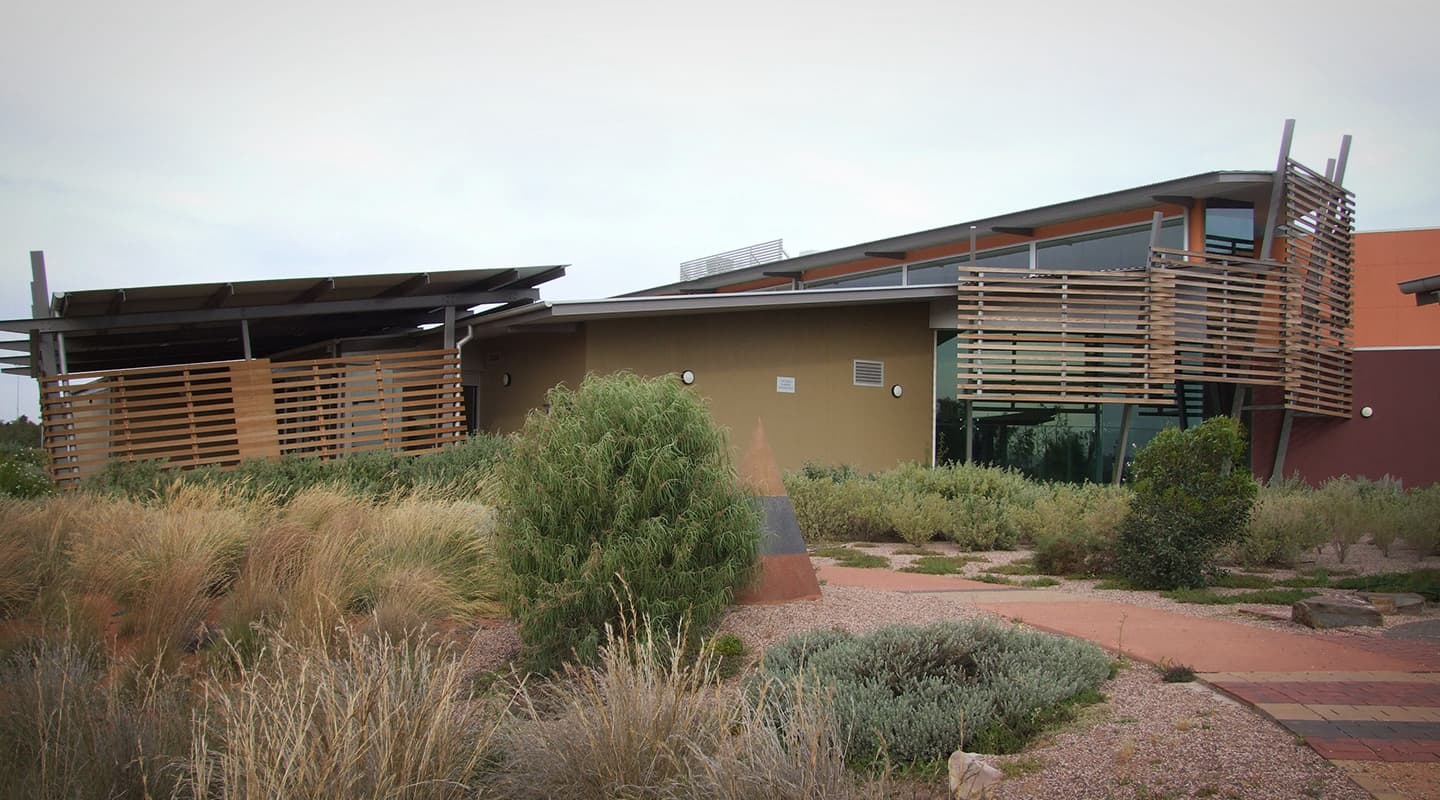
Court in the Bush
Port Augusta’s award winning courthouse puts a new face on regional justice.
Text:/ Graeme Hague
Photographer:/ Jason Ngagokorua
In Port Augusta, South Australia, the government commissioned a new court building that would not only cater for the local judiciary system, but provide a vehicle for processing cases involving indigenous offenders, particularly those who live in the more remote areas, and whose crimes can stem largely from having little understanding of the laws they have broken. In these circumstances the process of being arrested and incarcerated can be a completely bewildering and terrifying experience. While they are by no means immune to law, it was considered practical to try and reduce the amount of psychological distress in the judicial system.
The first step in producing a less traumatic legal process was the court’s location itself. Port Augusta is over 300 kilometres from Adelaide and while it’s not exactly the ‘outback’, it ain’t Rundle Street Mall either. This was a logistical challenge for Greg Hallam and his team at Total Electronic Contracting, based in Adelaide, who undertook the AV installation. The Audio Products Group supplied much of the hardware with consultant liaison manager, Jim Seretis providing the expertise. With a three hour drive each way, Greg and the crew wouldn’t want to leave their lunchbox back at the workshop. As it was, thanks to the usual delays and disruptions you find on any building project, they still racked up quite some mileage on the van traveling to and fro several times.
The courthouse’s exterior design was an award-winner, blending in with the landscape and therefore not presenting a daunting, alien place. Inside there are three court rooms, a Multi-Purpose Court, a Jury Court (the Supreme Court goes on circuit to Port Augusta three times a year) and a Magistrates Aboriginal Court. In addition there are registry and mediation facilities, offices for legal services, function rooms, a large foyer, and at the more serious end, holding cells for prisoners.
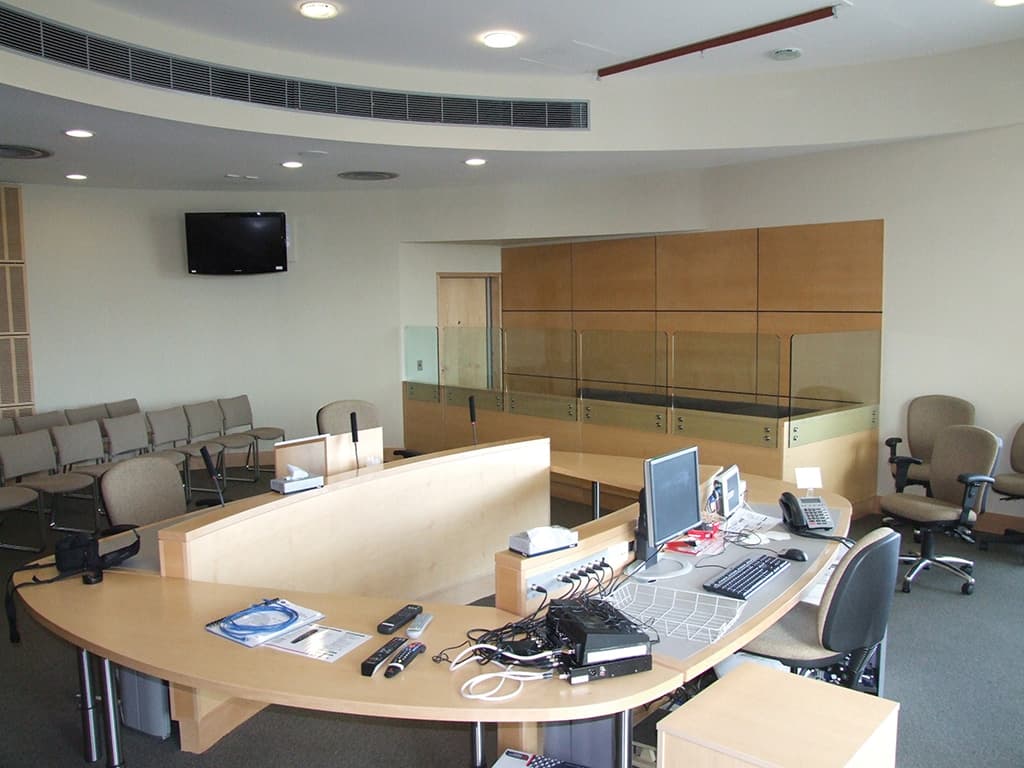
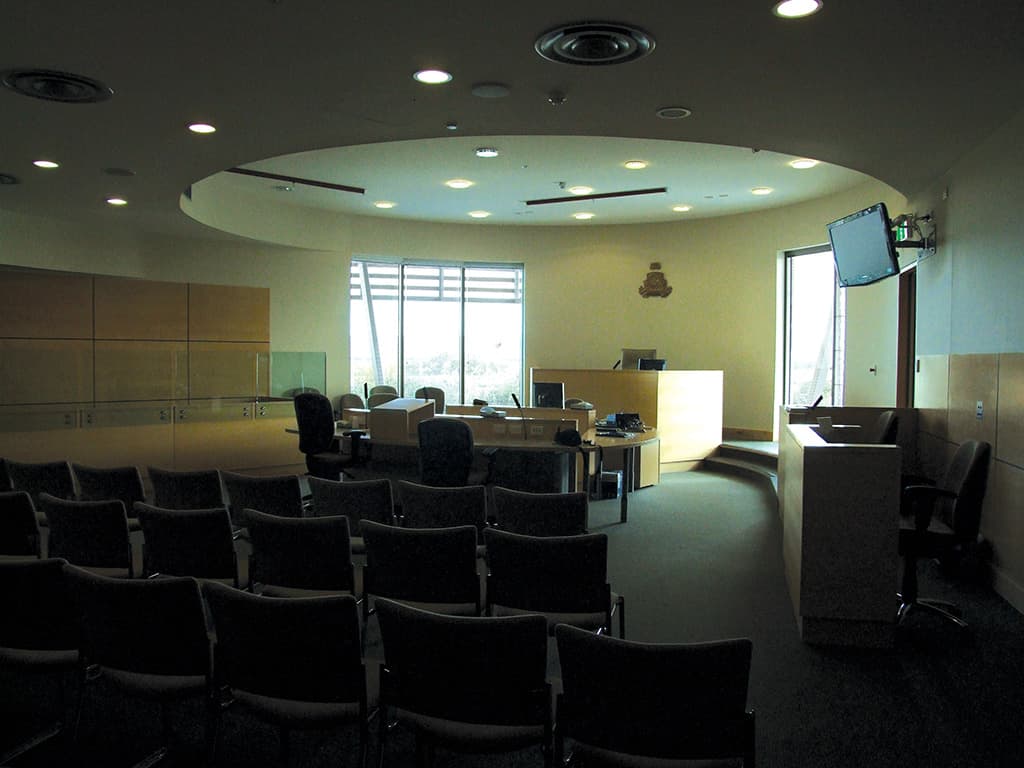
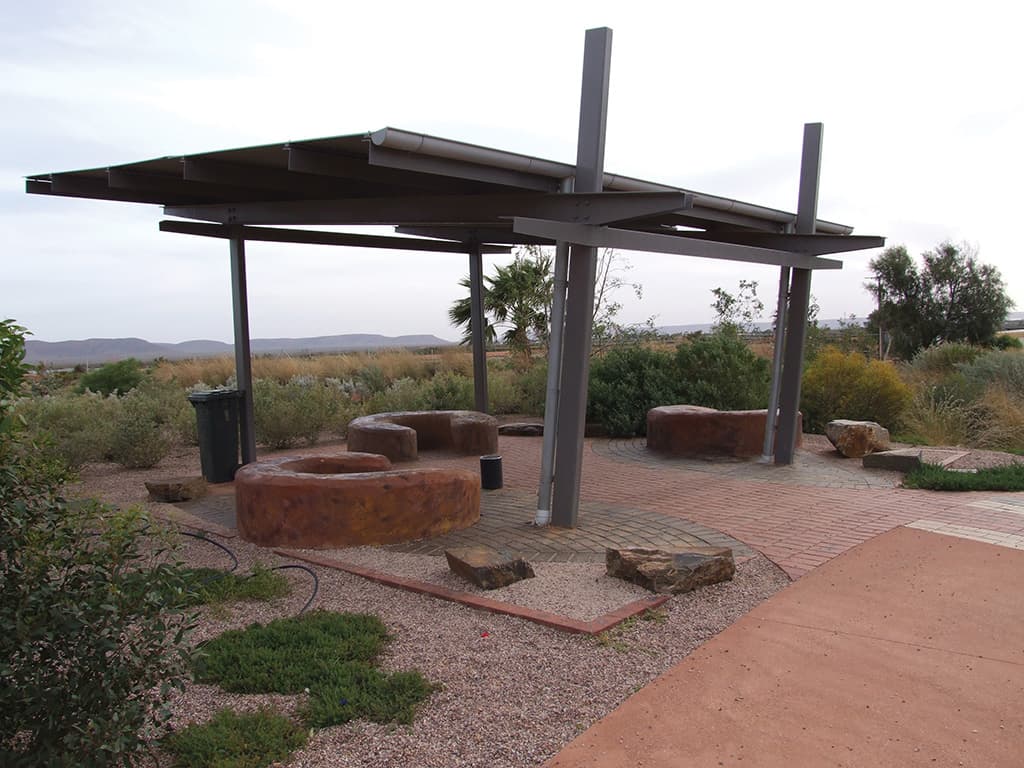
MOVEABLE FEAST
It’s absolutely vital in a facility like this, and in a location like this, to maintain a high level of intelligibility in sound re-enforcement (and the resulting recordings). While the legal fraternity are used to making themselves heard, the other participants in the process; the accused and witnesses, often aren’t nearly as articulate. Each court is equipped with Biamp AudiaFlex DSP processors, including Acoustic Echo Cancellation (AEC) cards using advanced noise reduction algorithms that result in very high intelligibility. The acoustics of each room are demanding, mainly because modern courtrooms are deliberately quite spartan with hard reflective surfaces that resist damage (lacking too the ornamental flourishes of the past that by default act as acoustic soaks) and also containing transparent, protective screens for jury members and witnesses – more large areas for sound reflection. This is especially the case in the Magistrates Court where the furniture and fittings are moveable and a new acoustic anomaly can raise its head at any moment. So the DSP cards certainly need to be on their toes. The input cards also feature Biamp’s proprietary Truesound AEC algorithms for increased frequency response, improved audio quality, and a more natural sound during full duplex transmission of speech.
That shifting furniture in the Magistrates Aboriginal Court is again about making some of the indigenous visitors to the room more at ease with their surroundings. In some aboriginal cultures sharp corners are believed to contain bad spirits. There are also drop-down screens to avoid direct eye-contact between the dock and the witness box, preventing any use of the ‘evil eye’ to intimidate witnesses (I could use one of those screens in front of my beer fridge…). To allow for these, the microphone positions had to be moveable, yet still firmly secure, adding an extra element of installation complexity for the Total Electronic Contracting team.
“”
The courthouse’s exterior design was an award-winner, blending in with the landscape and therefore not presenting a daunting, alien place.
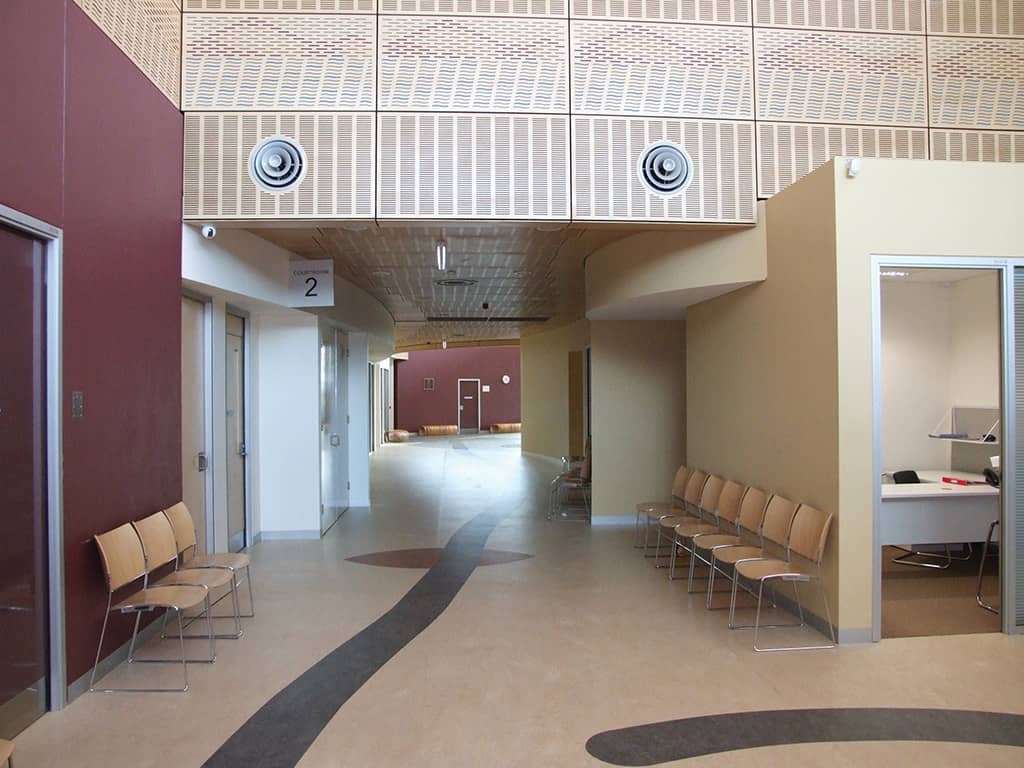
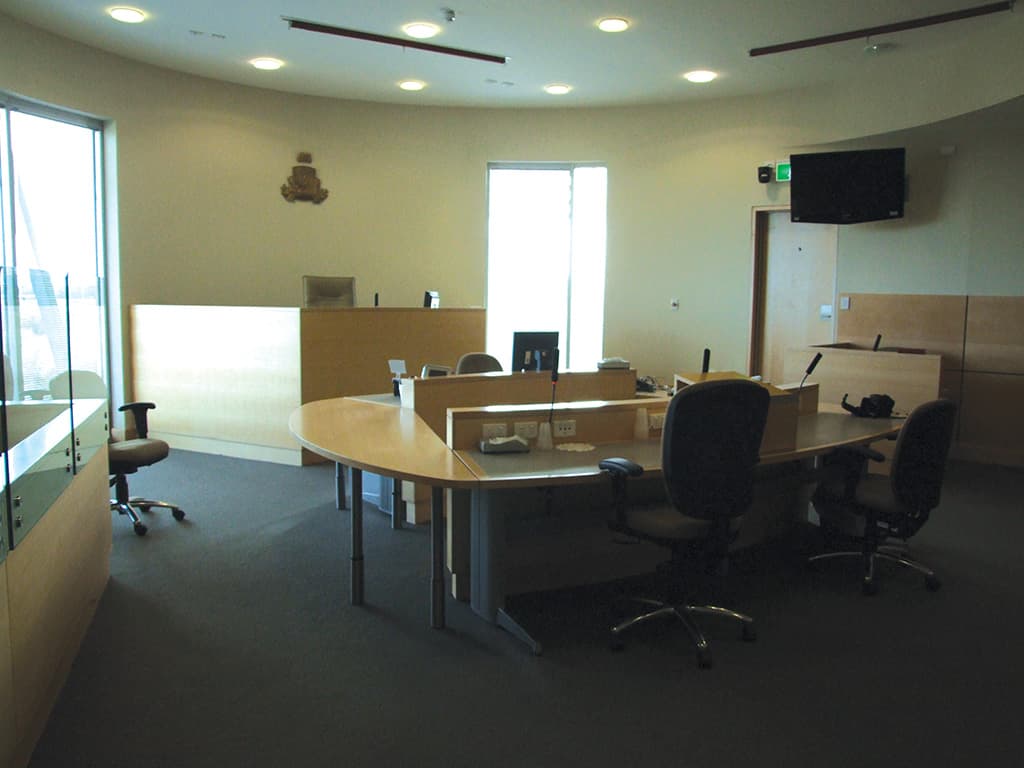

NON-LETHAL AUDIO GEAR
The holding cells needed special consideration, too. Regional police stations and courtrooms experience a high level of self-harm and suicides, particularly in the early stages of an arrest when uncertainty and panic can be running strong. Communications systems between prisoners and people trying to help them, taking place from either side of a protective barrier, had to be provided with hands-free operation and hardware that couldn’t be turned into a weapon by the prisoner to hurt themselves or anyone else. Speakers had to be flush-mounted in the ceiling, without sharp edges and resistant to water, while the AKG boundary microphones needed similar protection and to be beyond reach.
Back in the courtrooms, full video conferencing facilities are in place. With the Port Augusta courthouse dealing with a lot of cases involving witnesses from far and wide, it’s often more sensible to establish a remote link-up that’s displayed on the large LCD monitors located in plain view of the entire courtroom.
Courthouses are no longer grand Old Bailey-like structures with an affable Ronnie Barker in the dock, content to do porridge for being nicked. The Port Augusta facility is a good example of a modern space where state of the art AV equipment plays an increasingly important role in the law, ensuring that justice is not only seen to be done, it’s heard clearly, recorded properly and sometimes broadcast via a conference link reliably.
FURTHER INFORMATION
Total Electronic Contracting: (08) 8365 0377 or www.tecsa.com.au
Audio Products Group (Australia): (02) 9669 3477 or www.audioproducts.com.au


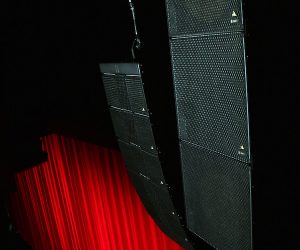





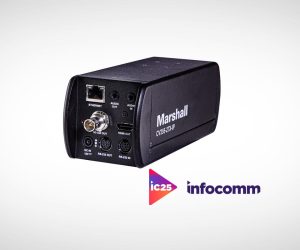


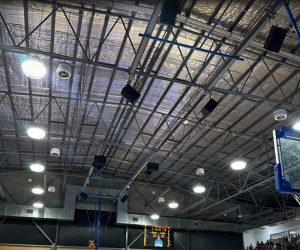



RESPONSES